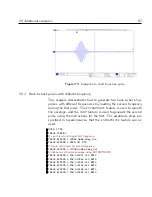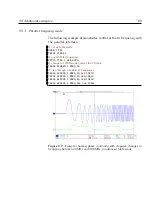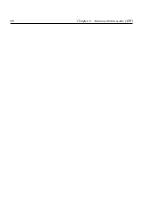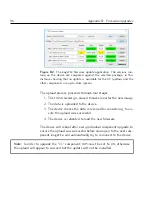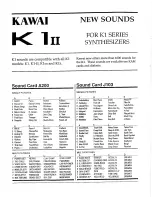
C. Command language
The
protocol
for
communicating
with
an
ARF/XRF
is
described
in
chapter 3, and the host software provided to interface with the unit
is detailed in chapter 4. The protocol follows a request/reply archi-
tecture: after sending a command, it is important to always wait for
the response before sending the next command.
Please note:
The command language is being continuously updated across firmware
releases to improve functionality and add features. When upgrading firmware, please
refer to the most recent version of the manual available at
http://www.moglabs.com
In
particular,
code
written
for
firmware
before
v1.0
may
need
up-
dating
to
be
compatible
with
newer
releases;
please
refer
to
the
individual commands below.
C.1
Arguments
Most commands require a channel number “
ch
” (either 1 or 2), and
accept a comma-separated list of parameters.
Parameters shown in
square
brackets
are
optional,
and
most
commands
are
treated
as
queries when called without a value.
All commands respond with a string that begins with either “OK” or
“ERR” to indicate whether it was successful.
It is strongly recom-
mended that the response be checked for success.
Units can be specified for values associated with frequency, power,
phase and time:
Frequency
Hz, kHz, MHz (default)
Power
dBm (default), dB, mW, W
Phase
deg (default), rad
Time
ns, us (default), ms, s
99
Summary of Contents for ARF021
Page 1: ...Agile RF Synthesizer AOM driver ARF021 ARF421 XRF021 XRF421 Version 1 5 0 Rev 6 ...
Page 4: ...ii ...
Page 10: ...viii Contents ...
Page 26: ...16 Chapter 3 Communications ...
Page 44: ...34 Chapter 5 External modulation ...
Page 50: ...40 Chapter 6 PID stabilisation ...
Page 64: ...54 Chapter 7 Digital I O ...
Page 100: ...90 Chapter 9 Advanced table mode XRF ...
Page 128: ...118 Appendix C Command language ...
Page 133: ......



